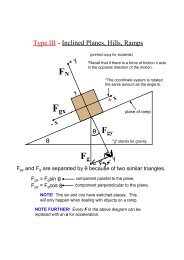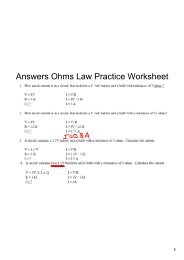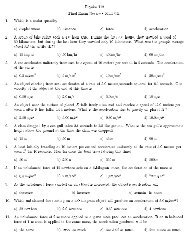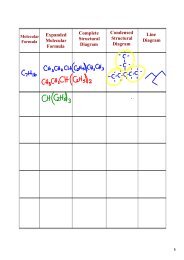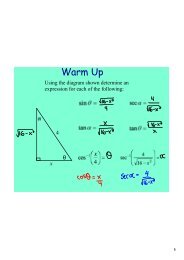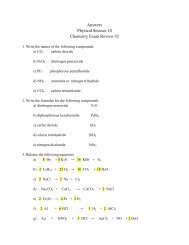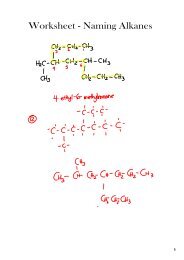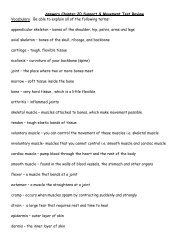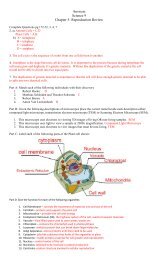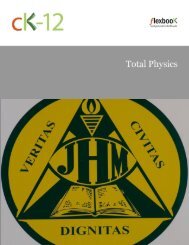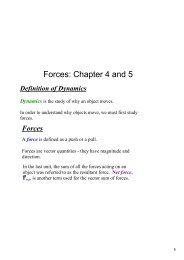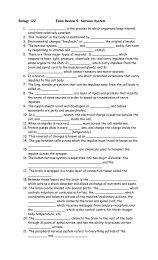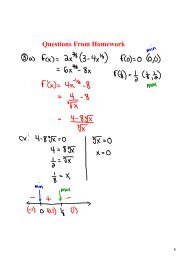Physics Study Guides.pdf - James M. Hill Memorial High School
Physics Study Guides.pdf - James M. Hill Memorial High School
Physics Study Guides.pdf - James M. Hill Memorial High School
Create successful ePaper yourself
Turn your PDF publications into a flip-book with our unique Google optimized e-Paper software.
Electrostatics Problem GuideImportant EquationsNote: all equations involving a charge q are only valid when q is a point charge. Calculus is required to for problemsinvolving continuous charge distribution. Also, the valuephysics beyond an introductory level, you will learn thatF - forceE - electricfieldis often written as a constant k. However, if you pursueis more than just a constant and carries greater significance.ε 0 - permittivityof free spaceq - charged - distance<strong>Physics</strong>V - voltageU e - electric potentialenergyExample ProblemsAside from basic electrostatics problems that involve plugging in values and basic algebra, most problems encounteredwill combine electrostatics with some other area in physics. The overall strategy is to use your equations as a road map.Start with the known values and use different equations to make connections until you get to your answer.Example 1One positively charged particle of charge +q and mass m 1 is orbiting around a fixed, negatively charged particle ofcharge -q at a distance d. Determine the linear velocity of the moving particle.SolutionIn this problem, the electrostatic force (determined by Coulomb’s law) acting between the particles is also thecentripetal force keeping the positive charge in its orbit because the two particles are attracting each other. We can usethis knowledge to solve for the linear velocity of the positive charge.Tip: The negative sign on the second charge has been dropped because it is easier to do the calculations using only theabsolute value of the charge. We can determine the direction of the force later on.set centripetal force equal to Coulomb’s lawsubstitute in the given valuessolve for vExample 2A charged particle with some initial velocity (v 0 ), charge (+q), and mass (m) is passing between two oppositely chargedplates with a voltage difference (V) applied across them. The particle starts outside the plates, but let’s assume thatthe plates extend infinity beyond where the particle starts. A diagram is provided below. If the particle starts halfwaybetween the plates, how far will it travel before hitting one of the plates?SolutionFirst we want to find the electric field between the plates. We know the field is constant between the plates, so we use:>We can now apply this to finding the vertical acceleration of the particle by applying F = Eq = ma.> >Now we can use the equations of kinematics to find out how long it takes for the charge to hit the plate.> > >Now we can apply Δx=vt to find how far the charge will travel.>Page 3 of 4




